A week ago yesterday, I showed you this image and asked what you thought might be going on in it. It got a couple of guesses, of which Bill Burton’s was the closest.
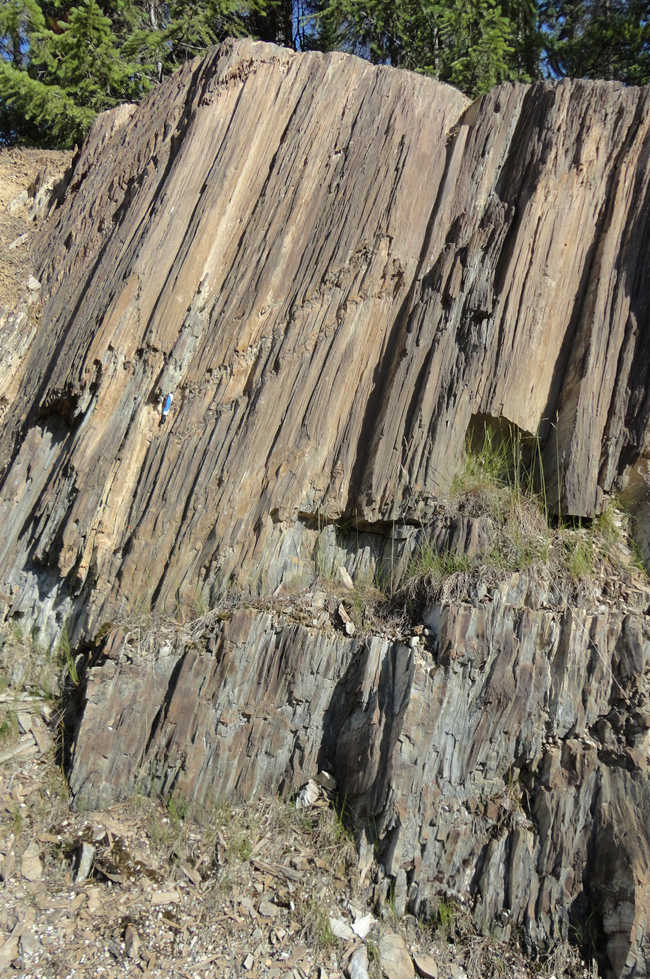
This is an outcrop of limy shale of the Chancellor Formation, across the street from Yoho National Park’s “Natural Bridge” site (where the Kicking Horse River has cut through the same rock to generate a small natural bridge).
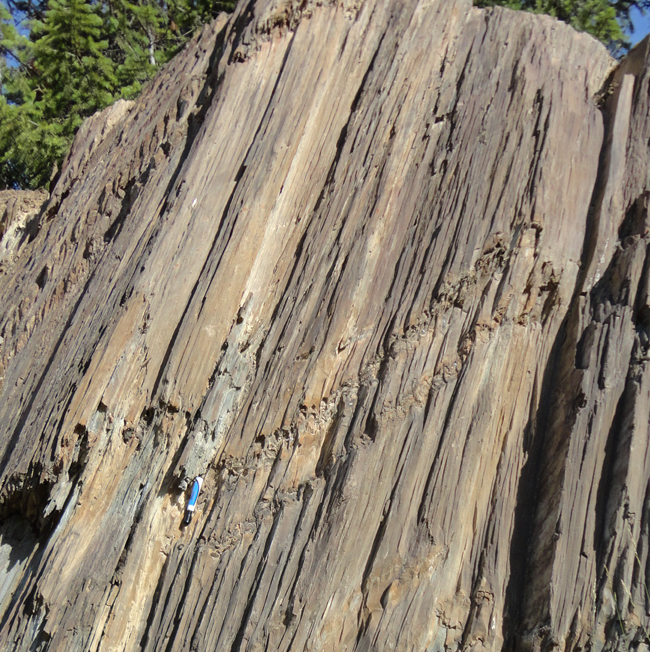
Here’s my interpretation of what’s going on: Cleavage overprinting tilted bedding, including and implying folds on a variety of scales, including a scale larger than this outcrop…
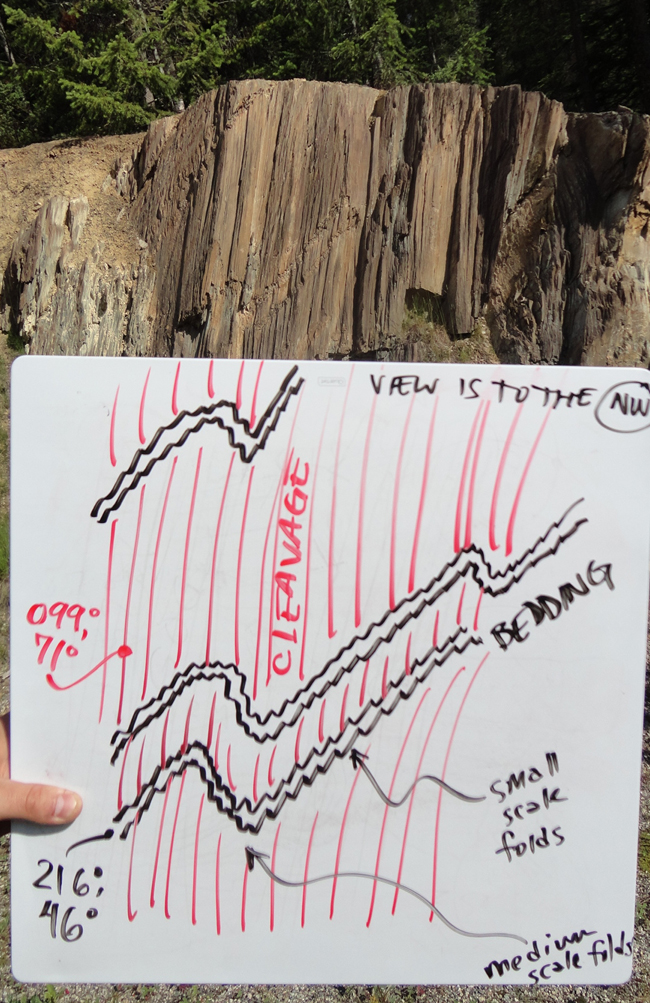
Some closer looks at the beds in question, showing the small-scale folds and the pervasive cleavage (dry erase marker for scale):
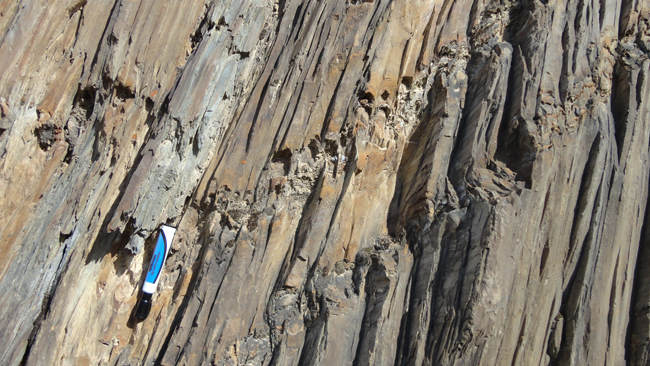

I hope you noticed the refraction of the cleavage there as it crosses the stiffer (obviously folded) beds:
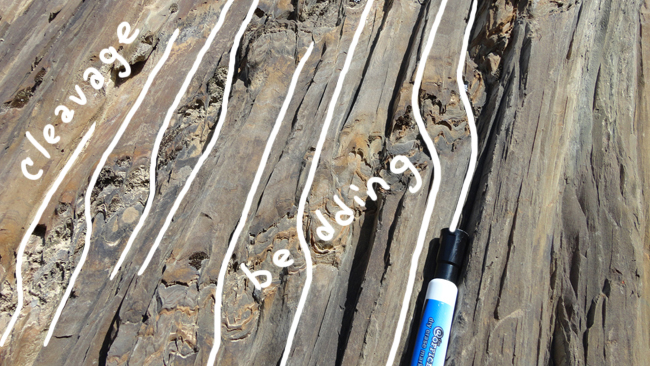
Same spot, but diving in a bit closer still…
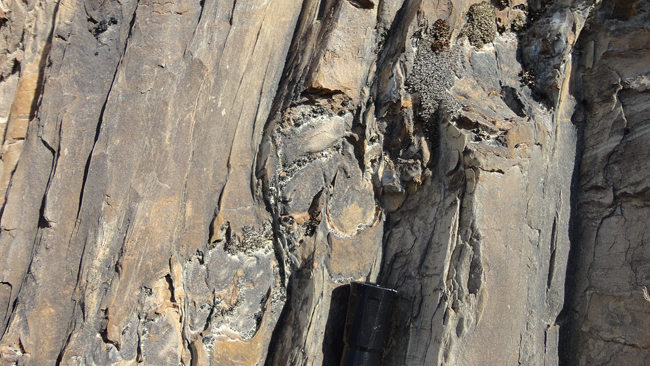
Some differential weathering highlights the bedding (and cleavage) here:

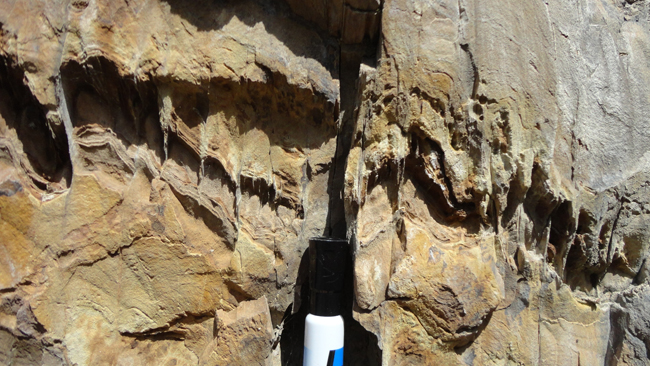
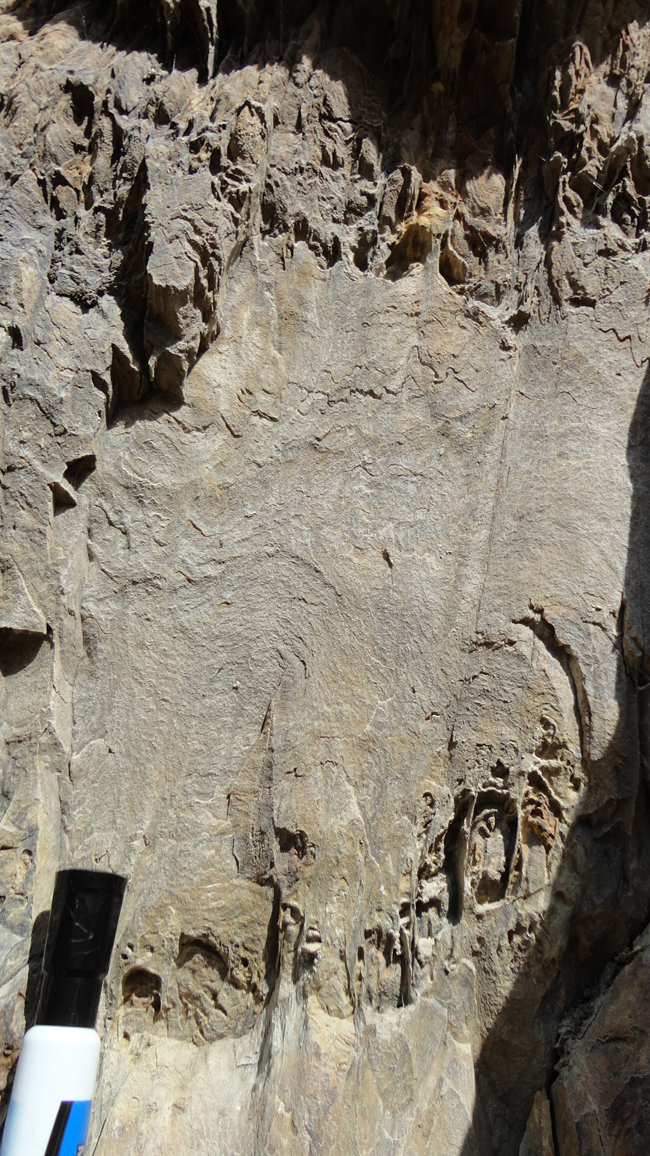
These rocks were deposited in the deep sea (west of the Kicking Horse Rim) during the Cambrian, and were metamorphosed during the mountain-building that resulted in the Canadian Rockies during the late Mesozoic and earliest Paleogene. Perhaps they originally contained delicate fossils of soft-bodied organisms like the Burgess Shale (which is further east, butted up against the Cathedral Escarpment), but if any such critters were once present, they would have been destroyed by Laramide deformation. (One hypothesis for why the Burgess Shale is so chock full of fossils is that it’s a representative of much more widespread fossils, but it just happened to be the bit that survived because it was protected from deformation by its big stiff neighbor, the Cathedral Formation limestone, which acted like a bicycle helmet for the Burgess Shale while the surrounding rock got smooshed.)
Happy Friday, and for those in the United States, enjoy the long Labor Day weekend.

I’m not a geologist (I’m a chemical engineer), but the first picture looks remarkably similar to a carbon fiber laminate composite specimen that has failed in compression.
Ah. I did notice the refraction of the cleavage along those diagonal lines, but didn’t recognize them as bedding, figuring they might be kink-bands. Those poor tormented rocks!